- Home
- Prelims
- Mains
- Current Affairs
- Study Materials
- Test Series
 EDITORIALS & ARTICLES
EDITORIALS & ARTICLES
Jan 17, 2022
INDIA EXTENDS $900 MN AID TO SRI LANKA
Recently, the Reserve Bank of India extended the financial aid to Sri Lanka.
 Highlights:
Highlights:
 Chips to Startup (C2S) Programme
Chips to Startup (C2S) Programme

 Background:
Background:
 Government Schemes For promotion of Startups in India:
Startup India
Government Schemes For promotion of Startups in India:
Startup India
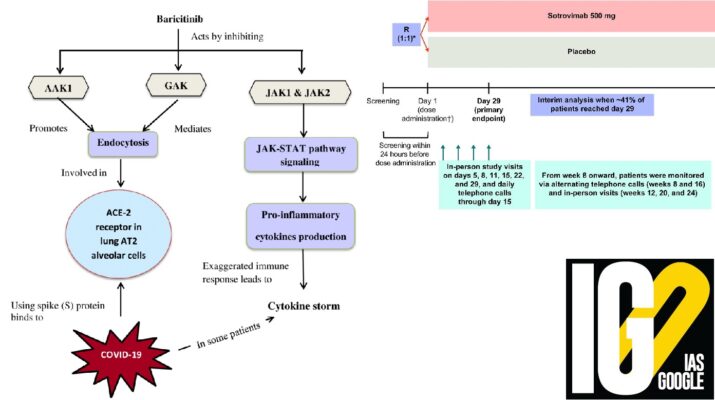 Baricitinib:
Baricitinib:
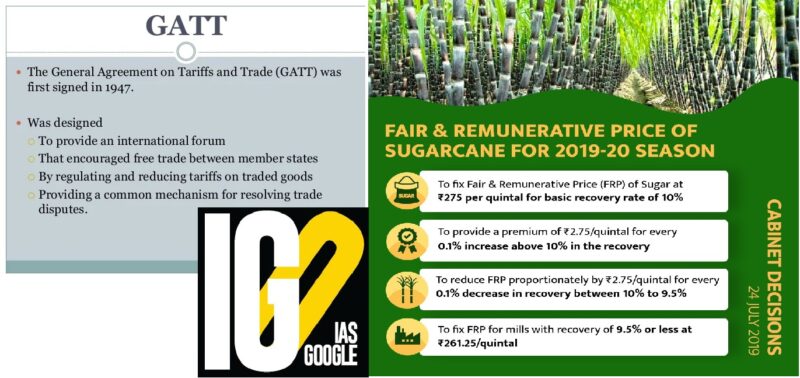 What is the Dispute?
What is the Dispute?

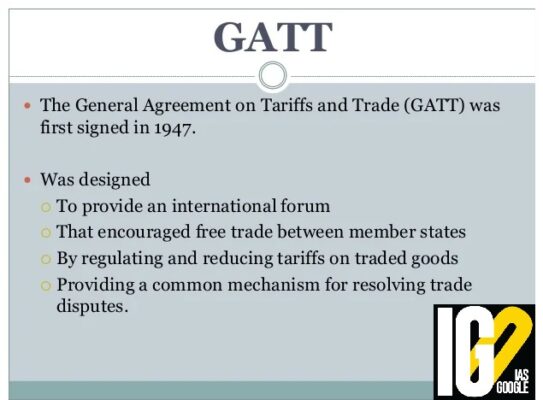
 Key Suggestions
Key Suggestions
 Location of Tonga
Location of Tonga
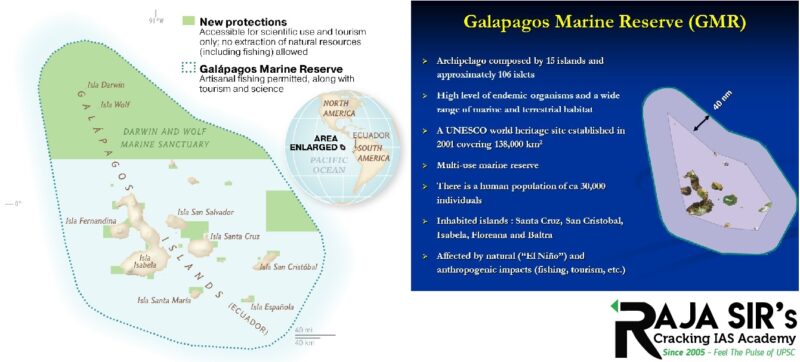 Galapagos Islands:
Galapagos Islands:
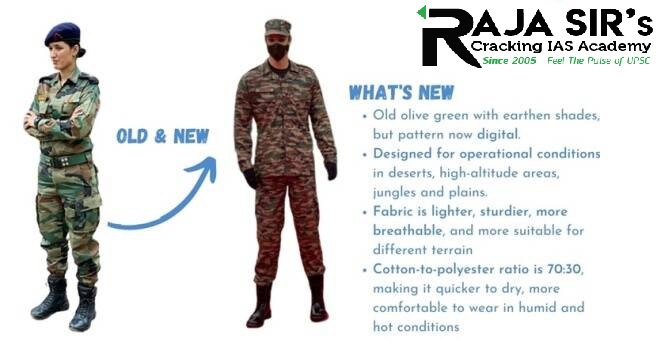 Difference in the new uniform different from the Army’s old uniform
Difference in the new uniform different from the Army’s old uniform
 Highlights:
Highlights:
- The RBI extended currency swap facility of $400 million.
- Aim: To help Sri Lanka cope with the impact of the first wave of the pandemic.
- The assistance includes deferring the payment of $500 million that Sri Lanka owes to the Asian Clearing Union (ACU).
- ACU is a regional initiative with the Central Banks and Monetary Authorities of Bangladesh, Bhutan, India, Iran, Maldives, Myanmar, Nepal, Pakistan and Sri Lanka.
- The relationship between two countries is more than 2500 years old.
- Trade and investment have grown and there is cooperation in the fields of development, education, culture and defence.
- Both countries share a broad understanding on major issues of international interest.
- The Prime Minister of India hosted a Virtual Bilateral Summit (VBS) with Sri Lankan Prime Minister in September 2020.
- A USD 15 million grant from India for promotion of Buddhist ties and an inaugural international flight carrying Sri Lankan pilgrims to the sacred city of Kushinagar were announced at the VBS.
- The entry into force of the India-Sri Lanka Free Trade Agreement (ISFTA) in 2000 contributed towards the expansion of trade between the two countries.
- Sri Lanka remains among the largest trade partners of India in the South Asian Association for Regional Cooperation (SAARC).
- In 2020, India was Sri Lanka’s 2ndlargest trading partner with the bilateral merchandise trade amounting to USD $ 3.6 billion.
- India is also one of the largest contributors to Foreign Direct Investment in Sri Lanka.
- FDI from India amounted to about US$ 1.7 billion during the period 2005 to 2019.
- The Indian Housing Project is Government of India (GoI)’s flagship grant project in Sri Lanka.
- Aim: To build 50,000 houses in war affected areas and estate workers in the plantation areas.
- India has so far committed to construct close to 62,500 houses in Sri Lanka.
- The 1990 Emergency Ambulance Service is another flagship project.
- The Service was initially launched in July 2016 in Western and Southern Provinces of Sri Lanka.
- It was later expanded to all the provinces in the next phase.
- There are another 20 ongoing grant projects across diverse spheres.
- Construction of 153 houses and infrastructure facilities.
- Construction of 600 houses under Model Village Housing Project in 25 districts of Sri Lanka etc.
- 11 Lines of credit (LOC) have been extended to Sri Lanka by the Export Import Bank of India in the last 15 years.
- Under the LOC of USD 318 million, various projects for procurement of rolling stocks for Sri Lankan Railways, upgradation of railway tracks, setting up of railway workshop etc. are at different stages of implementation.
- A US$ 100 million LoC for undertaking solar projects in Sri Lanka has been signed between the Government of Sri Lanka and EXIM Bank in June,2021.
 Chips to Startup (C2S) Programme
Chips to Startup (C2S) Programme
- Aim: To train 85,000 number of high-quality and qualified engineers in the area of Very large-scale integration (VLSI) and Embedded System Design.
- The programme would be implemented at about 100 academic institutions/R&D organisations across the Country.
- C-DAC (Centre for Development of Advanced Computing), a scientific society operating under MeitY, will serve as the nodal agency for the programme.
- With the help of this training, the government intends to usher the development of 175 ASICs (Application Specific Integrated Circuits), Working Prototypes of 20 System on Chips (SoC) and IP Core repository over a period of 5 years.

- Among these 4, X-band radar in Leh is installed at the highest altitude anywhere in India.
- It is a specialized radar that uses the Doppler effect to produce velocity data about objects at a distance.
- It does this by bouncing a microwave signal off a desired target and analyzing how the object's motion has altered the frequency of the returned signal.
- This variation gives direct and highly accurate measurements of the radial component of a target's velocity relative to the radar.
- The basics of radars is that a beam of energy, called radio waves, is emitted from an antenna.
- As they strike objects in the atmosphere, the energy is scattered in all directions with some of the energy reflected directly back to the radar.
- The larger the object, the greater the amount of energy that is returned to the radar.
- That provides us with the ability to "see" rain drops in the atmosphere.
- In addition, the time it takes for the beam of energy to be transmitted and returned to the radar also provides is with the distance to that object.
- Partly because of its common use by television meteorologists in on-air weather reporting, the specific term "Doppler Radar" has erroneously become popularly synonymous with the type of radar used in meteorology.
- Most modern weather radars use the pulse-Doppler technique to examine the motion of precipitation, but it is only a part of the processing of their data.
- Doppler radars were used as a navigation aid for aircraft and spacecraft.
- By directly measuring the movement of the ground with the radar, and then comparing this to the airspeed returned from the aircraft instruments, the wind speed could be accurately determined.
- Location-based Doppler techniques were used in the U.S. Navy's historical Transit satellite navigation system.
- Army Day 2022 marks the 74th Army Day, with the theme of ‘In Stride with the Future’.
 Background:
Background:
- On January 15, 1949, Field Marshal Kodandera M Cariappa had taken over the charge as Indian Army’s first Commander-in-Chief. To remember and commemorate this day, it is celebrated as Army Day or Indian Army Day.
- It is celebrated to recognize and acknowledge the achievements and risks undertaken by Indian army personnel.
 Government Schemes For promotion of Startups in India:
Startup India
Government Schemes For promotion of Startups in India:
Startup India
- It is a flagship initiative of Government of India.
- Launched in: 16th January 2016.
- Aim: Building a strong ecosystem for nurturing innovation and startups in the country.
- It will support 3,600 entrepreneurs through 300 incubators in the next 4 years.
- Rs. 945 crores have been sanctioned under the SISFS Scheme from 2021-22.
- Aim: To provide financial assistance to startups for proof of concept, prototype development, product trials, market entry and commercialization.
- Aim: To meet the funding needs of startups.
- Monitoring agency: Department for Promotion of Industry and Internal Trade (DPIIT)
- Operating agency: Small Industries Development Bank of India (SIDBI)
- To enable ease of procurement, Central Ministries/ Departments are directed to relax conditions of prior turnover in public procurement for all Startups subject to meeting quality and technical specifications.
- Further, Government e-Marketplace (GeM) Startup Runway; a dedicated corner for startups to sell products & services directly to the Government.
- Startups are allowed to self-certify their compliance under 6 Labour and 3 Environment laws for a period of 3 to 5 years from the date of incorporation.
- Startups incorporated on or after 1st April 2016 can apply for income tax exemption.
- The recognised startups that are granted an Inter-Ministerial Board Certificate are exempted from income-tax for a period of 3 years out of 10 years since incorporation.
- A DPIIT recognized startup is eligible for exemption from the provisions of section 56(2) (vii-b) of the Income Tax Act.
- Ministry of Corporate Affairs has notified Startups as ‘fast track firms’ enabling them to wind up operations within 90 days vis-a-vis 180 days for other companies.
- Launched in: 19th June 2017
- It is an online platform for all stakeholders in India to discover, connect and engage with each other.
- It will connect Indian startup to global startup ecosystems through various engagement models.
- It will be done through international Government to Government partnerships, participation in international forums and hosting of global events.
- Aim: To recognize and reward outstanding startups and ecosystem enablers that are building innovative products or solutions with high potential of employment generation or wealth creation, demonstrating measurable social impact.
- Startups are eligible for fast-tracked patent application examination and disposal.
- The Government of India launched Start-ups Intellectual Property Protection(SIPP).
- It facilitates the startups to file applications for patents, designs and trademarks through registered facilitators in appropriate IP offices by paying only the statutory fees.
- India is the third-largest base for unicorns in the world after the US which has close to 487 unicorns, and China which is home to 301 unicorn startups.
- In 2021, India granted 28,000 patents compared to 4,000 in 2013-14, while 2.5 lakh trademarks were registered in 2020-21 compared to 70,000 in 2013-14.
 Baricitinib:
Baricitinib:
- Baricitinib is an immunomodulator, used to treat rheumatoid arthritis.
- It is an oral drug.
- It is a part of a class of drugs called Janus kinase (JAK) inhibitors that suppress the overstimulation of the immune system.
- It is developed by GlaxoSmithKline.
- It is an investigational monoclonal antibody for use in treating conditions caused by coronavirus.
- The WHO has conditionally recommended its use for patients who are older, are immunocompromised, and have underlying conditions like diabetes, hypertension and obesity, and are unvaccinated.
- The WTO’s dispute settlement panel had ruled that India, by subsidizing sugar producers, was breaking rules framed under the General Agreement on Tariffs and Trade (GATT) which govern international trade.
 What is the Dispute?
What is the Dispute?
- In 2019, Australia, Brazil, and Guatemala complained against India at the WTO over the subsidies offered by the Indian government to sugar producers.
- They argued that these subsidies, which include both domestic subsidies as well as export subsidies, exceed the limits imposed by WTO trade rules.
- According to WTO rules, subsidies cannot exceed 10% of the total value of sugar production.

- WTO ruled that India’s sugar policy was favouring domestic producers through subsidies to the detriment of foreign producers.
- The panel recommended that India withdraws its alleged prohibited subsidies under the Production Assistance, the Buffer Stock, and the Marketing and Transportation Schemes within 120 days from the adoption of this report.
- India has argued at the WTO that it does not offer direct subsidies to sugarcane farmers and thus doesn’t break any international trade rule.
- The WTO Appellate Body’s decision will be considered final on the dispute.
- In case India refuses to comply with the decision, it might have to face retaliatory action from other countries.
- This could be in the form of additional tariffs on Indian exportsand other stringent measures.
- India is the second-largest sugar producer in the world after Brazil.
- It is estimated that more than 5 crore people depend on the cultivation of sugarcane alone for their livelihood.

- It is an intergovernmental organization that regulates and facilitates international trade between nations.
- It officially commenced operations on 1 January 1995, pursuant to the 1994 Marrakesh Agreement.
- The agreement developed out of the General Agreement on Tariffs and Trade (GATT), supplemented by a number of other agreements on issues including trade in services, sanitary and phytosanitary measures, trade-related aspects of intellectual property and technical barriers to trade.
- The WTO facilitates trade in goods, services and intellectual property among participating countries by providing a framework for negotiating trade agreements, which usually aim to reduce or eliminate tariffs, quotas, and other restrictions.
- Headquarter: Geneva, Switzerland.
- Its top decision-making body is the Ministerial Conference, which is composed of all member states and usually convenes biennially.
- World Trade Outlook Indicator
- World Trade Statistical Review
- World Trade Report
- The Appellate Body was established in 1995 under Article 17 of the Understanding on Rules and Procedures Governing the Settlement of Disputes (DSU).
- It is a standing body of seven persons that hears appeals from reports issued by panels in disputes brought by WTO Members.
- The Appellate Body can uphold, modify or reverse the legal findings and conclusions of a panel.
- The Appellate Body has its seat in Geneva, Switzerland.
- There is currently no Member in the Appellate Body.
 Key Suggestions
Key Suggestions
- Change the public perception of FCI from being inefficient & corrupt to dynamic, inclusive & honest.
- Focus on integrating end-to-end tech solutions right from procurement to delivery to achieve operational efficiency & leakage free, distribution, reduce response time, beneficiary tracking etc.
- Establish a grievance redressal mechanism to react rapidly to farmer/Farmer Producer Organisation in distress.
- Plan for modern infrastructure & logistics.
- Upgrade warehouses to international standards.
- Improve storage capacity for the growing need - power backup, CCTV, robust network facility.
- Adopt Global best practices to make India a ‘Food hub’.
- It was setup under the Food Corporation's Act 1964.
- Aim: For effective price support operations for safeguarding the interests of the farmers.
- The Central government extends price support for procurement of wheat, paddy and coarse grains through the FCI and state agencies.
- To provide farmers remunerative prices.
- To make food grains available at reasonable prices, particularly to vulnerable section of the society.
- To maintain buffer stocks as measure of Food Security.
- To intervene in market for price stabilization.
- This volcano has erupted regularly over the past few decades.
 Location of Tonga
Location of Tonga
- The kingdom of Tonga is an archipelago south of Samoa.
- Tonga is tiny island nation comprising of 150 islands, some of them being uninhabited.
- It is located northeast of New Zealand in the Pacific Ocean.
- It consists of two small uninhabited islands, Hunga-Ha’apai and Hunga-Tonga.
- An undersea or submarine volcano is located below the ocean surface and mostly erupts under water.
- Three-quarters of all volcanic activity on Earth actually occurs underwater.
- They are located near the Earth’s tectonic plates.
- Submarine volcanoes are most common where tectonic plates move towards or away from each other.
- Undersea volcanic activities give rise to seamounts.
- Seamounts are underwater mountains that are formed on the ocean floor but do not reach the water surface.
- An underwater volcano is usually believed not to be explosive since the magma is supposed to be cooled down by the cool water.
- However, when magma is blasted out of the ground full of volcanic gas, it does not provide a layer of insulation to allow the outer surface of the magma to cool.
- There are two types of sound generated by submarine eruptions:
- One created by the slow release and bursting of large lava bubbles.
- The other one is created by quick explosions of gas bubbles.
- Violent volcanic eruptions represent impulsive disturbances, which can displace a great volume of water and generate destructive tsunami waves in the immediate source area.
- According to this mechanism, waves may be generated by the sudden displacement of water caused by a volcanic explosion.
 Galapagos Islands:
Galapagos Islands:
- Galapagos Islands are a group of Islands located in the west of mainland Ecuador.
- They are distributed on either side of the equator in the Pacific Ocean.
- The islands are known for an abundance of endemic species. These species were studied by Charles Darwin and prosed Darwin's theory of evolution.
- The islands are formed at the meeting point of three tectonic plates—the Nazca, Cocos, and Pacific.
- These plates are situated at the crossroads of three major Pacific currents: Cold South Equatorial Current, Warm Panama Current and Deep-Sea Cromwell Current.
- It is under the control of Ecuador. Due to its biodiversity, it is designated as
- Galápagos Marine Reserve and Galapagos National Parkby the Ecuador government.
- The UNESCO recognized it as a World Heritage Site (19780) and as a biosphere reserve under the World Network of Biosphere Reserves (WNBR) (1985).
- Marine or oceanic areas notified by the concerned government, with aim of protection of flora or fauna are known as Marine protected areas.
- It may be anything including, wildlife sanctuary, National Park, biosphere, etc. Here human activities are more strictly regulated than the surrounding waters.
- Generally, On the coasts, protected areas that fall entirely or partially within 500 metres to landward from the High Tide Line (as described by the Coastal Regulation Zone notification, 2011) are considered to be MPAs.
- The seaward extent of MPAs under the Wildlife Act is limited to the extent of the Territorial Sea as promulgated by the Maritime Zones Act, 1976 i.e., 12 nautical miles from India’s baseline.
- The Marine National Park (Gulf of Kutch, Gujrat) is the largest Marine National Park of India.
- MPAP is an informal collaboration of MPA Agencies from around the world to discuss common issues and explore opportunities for cooperation.
- IUCN is a historical partner of the MPAAP and contributes to building this network of Agencies.
- MPAAP's membership: Argentina, Australia, Canada, Chile, Colombia, Finland, France, Germany, Indonesia, Italy, Malaysia, Mexico, New Zealand, the Philippines, the Republic of Korea, Spain, South Africa, the United Kingdom (U.K.), the United States (USA) and IUCN Global Marine and Polar Programme (observer).
 Difference in the new uniform different from the Army’s old uniform
Difference in the new uniform different from the Army’s old uniform
- The main changes in the new uniform are with regard to the camouflage pattern, design, and the use of a new material.
- While the new unique camouflage pattern retains the combination of the same color's (olive green and earthen shades), the pattern is digital
- It has been designed keeping in mind the many kinds of operational conditions that the soldiers' function in, from deserts to high-altitude areas, jungles and plains.
- The fabric for the new material makes it lighter, sturdier, more breathable, and more suitable for the different terrains that soldiers are posted in.
- The cotton-to-polyester ratio is 70:30, making it quicker to dry, more comfortable to wear in humid and hot conditions, and lightweight.
- The uniforms will be barcoded and QR coded to maintain their uniqueness.









 Latest News
Latest News General Studies
General Studies